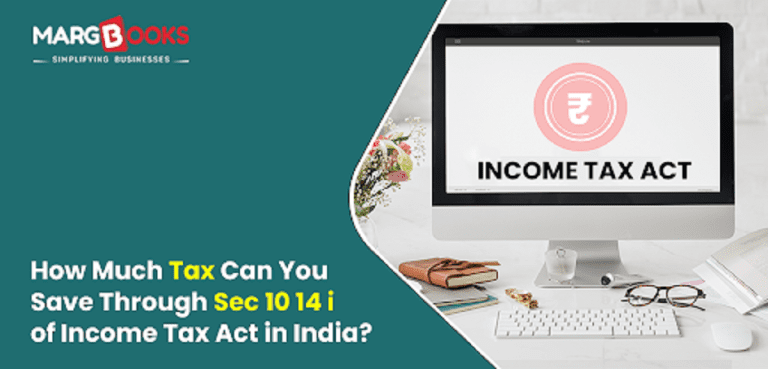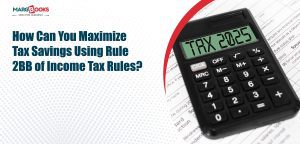Ever wondered how your colleague manages to pay less tax despite earning similar income? The secret often lies in understanding specific tax provisions like Sec 10 14 i of income tax act. This particular section offers legitimate ways to reduce your taxable income through various allowances and exemptions.
Whether you’re a salaried professional or a freelancer, knowing these tax-saving opportunities can put extra money back in your pocket. Let’s dive into the practical aspects of this provision and see exactly how much you can save.
What is Section 10(14)(i) of the Income Tax Act?
Think of Sec 10 14 i of income tax act as your financial ally in the battle against high taxes. This section specifically deals with allowances and perquisites that employers provide to employees for work-related expenses. The beauty of this provision is that it makes these allowances completely tax-free, provided you meet certain conditions.
Allowances under Section 10 (14)(i) are exempt from the amount received or the amount spent on specific duties, whichever is lower. This means you don’t pay a single rupee in tax on these legitimate work expenses.
Who Can Benefit from This Section?
Almost every salaried employee can take advantage of this provision. The key is understanding which allowances qualify and how to claim them properly. Freelancers who work with companies that provide allowances can also benefit from these exemptions.
Types of Allowances Covered Under Section 10(14)(i)
The beauty of Section 10(14)(i) lies in its comprehensive coverage of work-related expenses. Let’s explore the specific types of allowances that can help you save substantial tax amounts
Daily Allowance (DA)
When you’re traveling for work or temporarily posted away from your usual workplace, Daily Allowance: For daily expenses during tours or transfers with inventory management software, provided when not at the usual place of duty. This allowance covers your food and incidental expenses during official trips.
Here’s how it works: If your company gives you ₹1,000 per day for a 5-day business trip, that entire ₹5,000 is tax-free. No questions asked, no receipts are needed for the basic allowance.
Travel Allowance (TA)
Travel Allowance: Covers travel costs during tours and official duties. Whether you’re taking a train, flight, or taxi for work purposes, this allowance ensures you don’t pay tax on money that’s simply reimbursing your expenses.
Conveyance Allowance
Any allowance granted to an employee to meet his expenditure on conveyance from his residence to his place of work and back is exempt from tax. However, there’s a catch here. For regular employees, conveyance allowance is now fully taxable under both old and new tax regimes.
But here’s an important exception. However, it is exempt under both tax regimes to the extent of 3,200 per month for employees who are physically challenged, such as blind, deaf, dumb, or orthopedically handicapped with disability of the lower extremities.
Uniform Allowance
If your job requires specific clothing or uniforms, any allowance provided for this purpose falls under this exemption. This includes safety equipment, formal wear requirements, or specialized clothing.
Helper Allowance
For employees who need domestic help due to their job requirements, this allowance provides tax relief. It’s particularly relevant for senior executives or those in demanding positions.
How to Claim These Exemptions?
Claiming tax exemptions under Section 10(14)(i) isn’t rocket science, but it does require following the right steps and maintaining proper records. Here’s your roadmap to ensure you get every rupee you’re entitled to.
Documentation Requirements
To claim exemptions under Section 10, employees must provide supporting documentation, such as rent receipts for HRA or travel tickets for LTA, to their employer. For allowances under Section 10(14)(i), you typically need:
- Tour reports and itineraries
- Bills for official expenses (where applicable)
- Certificates from your employer confirming the allowance purpose
- Proof of actual expenditure for certain categories
Working with Your Employer
The process is straightforward if your employer already provides these allowances. Simply ensure they’re correctly classified in your salary structure. If not, have a conversation with your HR department about restructuring your compensation to include legitimate allowances.
Using Technology for Better Management
Modern accounting software can help you track these allowances efficiently. Many companies now use high-end software that integrates with payroll systems to automatically calculate and apply these exemptions.
Many tax professionals recommend MargBooks for its user-friendly interface and advance calculation features. Whether you’re an individual taxpayer or a business owner, MargBooks simplifies the complex world of tax planning and helps you maximize your savings under various sections, including Sec 10 14 i of income tax act.
Common Mistakes to Avoid
Even the most well-intentioned taxpayers can stumble when claiming allowances under Section 10 14 i of income tax act. These mistakes can cost you money and potentially invite unwanted scrutiny from tax authorities.
Claiming Without Proper Documentation
Don’t assume that just because your salary slip shows an allowance, it’s automatically exempt. Ensure you have proper documentation and that the allowance serves its intended purpose.
Mixing Personal and Official Expenses
The exemption applies only to legitimate work-related expenses. Using travel allowance for personal trips or daily allowance when working from your regular office can lead to tax complications.
Ignoring the Actual Expense Rule
Remember, the exemption is limited to actual expenses or the allowance amount, whichever is lower. If you receive ₹1,000 daily allowance but spend only ₹600, you can claim an exemption only for ₹600.
The Bigger Picture: Long-term Impact
The cumulative effect of these tax savings can be substantial. Consider someone saving ₹20,000 annually through these allowances. Over a 30-year career, that’s ₹6 lakh in direct tax savings. If invested wisely, this amount could grow to over ₹20 lakh by retirement.
This isn’t just about paying less tax today; it’s about building wealth for tomorrow. Every rupee saved through legitimate means like Sec 10 14 i of income tax act is a rupee that can work for your financial goals.
Conclusion
Smart tax planning isn’t about finding loopholes; it’s about understanding and using the legal provisions available to you. Sec 10 14 i of income tax act offers genuine opportunities to reduce your tax burden while covering legitimate work expenses. The key lies in proper documentation, strategic planning, and staying within the legal framework.
Remember, the goal isn’t just to save tax this year but to build a sustainable approach with MargBooks for tax-efficient earning. Start reviewing your salary structure today, and see how much you can save through these perfectly legal allowances.




